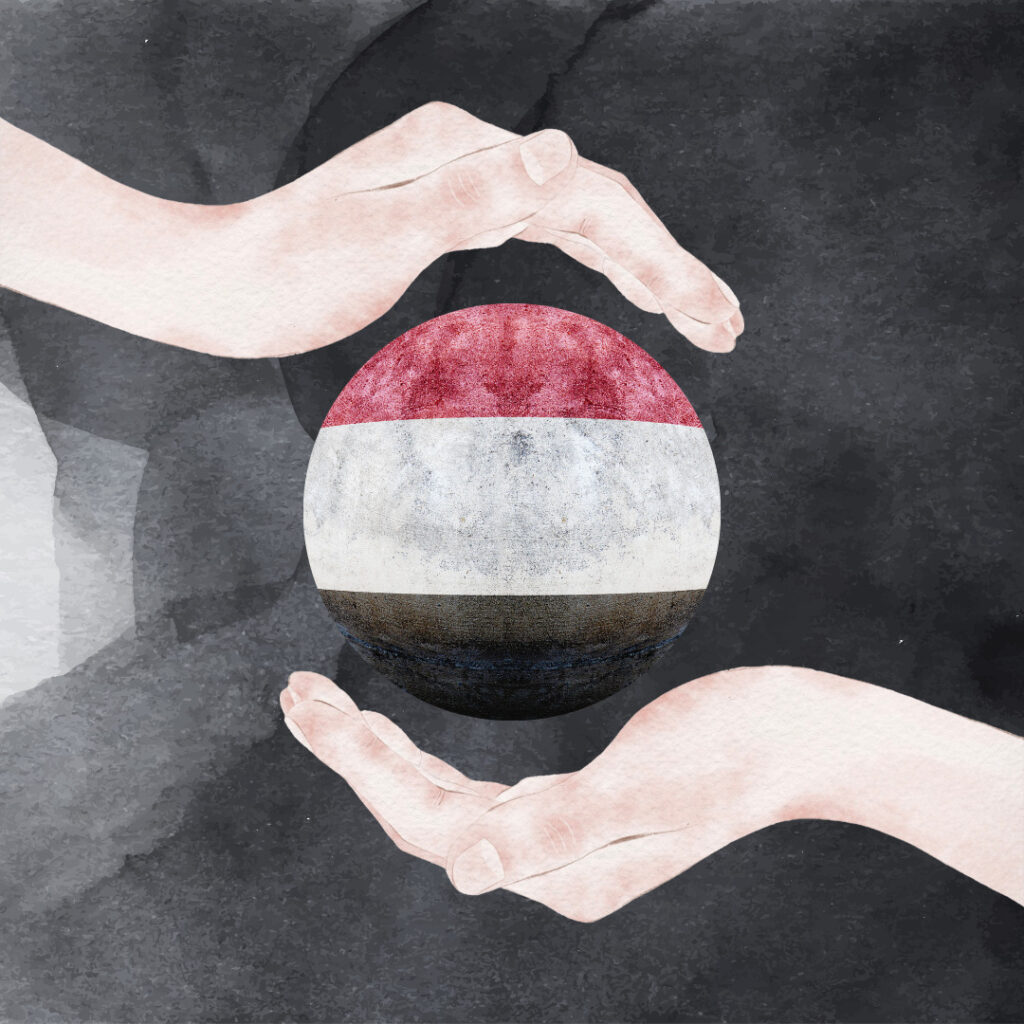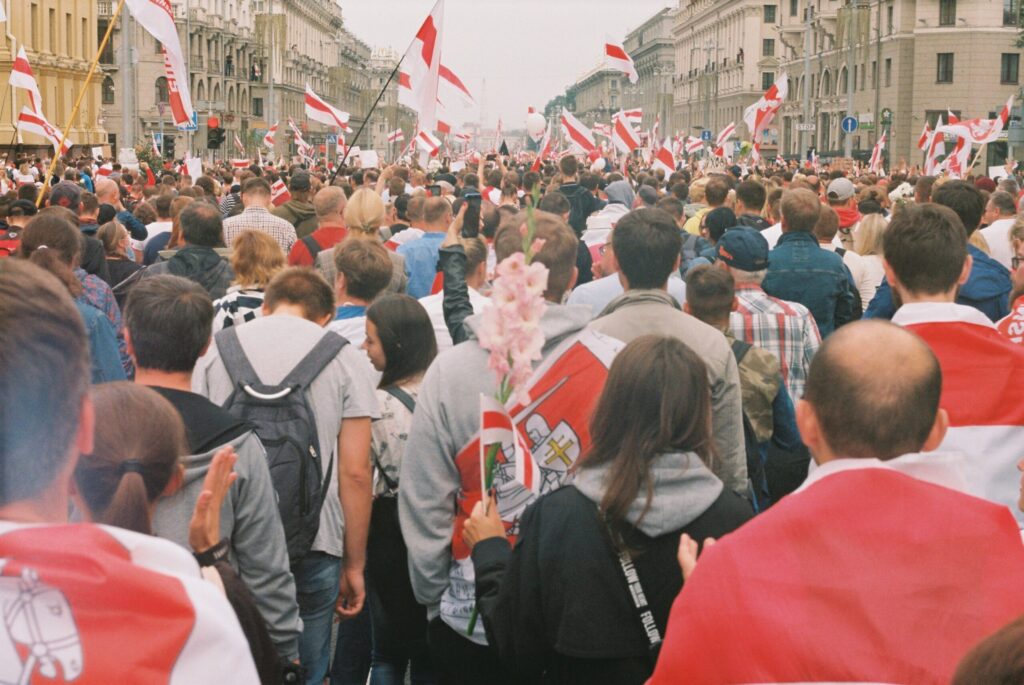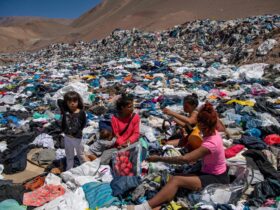The current Yemen Civil War is just the latest in a series of domestic conflicts that have plagued the country, causing widespread famine and displacement and resulting in one of the world’s worst humanitarian crises. While it is easy to dismiss the origin of the Yemen Civil War as the result of centuries-old religious antagonism between the Shia and Sunni Muslim populations, the historical source of these disputes was the creation of a divide and disparate allocation of resources between North and South Yemen by the British in the 19th century.
The Houthi coalition is the rebel group from North Yemen that rose up against the Yemeni government and resulted in the current civil war. The Houthi coalition is an organization of members of the Yemeni Houthi tribe who formed a political party in the 1990s to overthrow the Yemeni government, utilizing religion to generate sympathy for their cause, especially in contrast to the previous semi-secular Sunni regime. Similarly, countries such as Saudi Arabia and Iran have utilized religion to create support for their respective interventions in Yemen when the real motive is geopolitical dominance. Yemen is yet another case of a country that has received too much international interest and a prime example of the way foreign involvement in a civil war can escalate and exacerbate the conflict.
Although Yemen has a long history of civil war and secessionist movements, it is not an inherently unstable or conflict-prone state. For decades, Yemen has drawn the interest of regional powers and fallen victim to Western hegemony, causing the country to devolve into the state of crisis that prevails in the nation today.
Yemen’s Colonial History
In order to understand Yemen’s current civil war, one must trace the roots of conflict in the country from British policy in the state beginning in the 19th century through the North Yemen Civil War in the 1960s. Doing so demonstrates the influence that foreign involvement has had on shaping Yemen’s current conflict.
The south of Yemen first came under British influence when the empire captured the port of Aden in 1839. After the collapse of the Ottoman Empire in 1918, North Yemen gained independence, but South Yemen remained under British rule until November 1967, when British forces vacated the country following a revolt. It was not until 1990 that North and South Yemen would officially reunite.
However, by 1990, the two states had developed independently of each other, with North Yemen falling into a civil war from 1962-1970 between those who supported the rule of the Mutawakkilite Kingdom and those who desired the creation of an Arab Republic. The Republic’s forces would ultimately end up winning the conflict, with Saudi Arabia officially recognizing its legitimacy in 1970. Tensions between the two regions rose in 1994, when southern Yemen groups attempted to secede from the rest of the nation. These groups were ultimately defeated and the country was reunited, but with the Houthi uprisings beginning in 2004, it was only a matter of time before civil conflict broke out again.
The 2014 Civil War
Yemen’s most recent civil war officially began in 2014 as a fight for power between the previous Yemeni government led by President Ali Abdullah Saleh, who had been the country’s authoritarian leader since its reunification in 1990, and the Houthis, an ethnic group based in northern Yemen that practices Zaydi Shi’ism. The Houthis, like much of north Yemen, felt they had been shut out of the nation’s political system based in the south. Although Yemen’s capital, Sanaa, is in the north, the capital’s location was a compromise made upon the reunification of Yemen to provide a semblance of political power to the north, which was already incredibly economically and politically disadvantaged. However, most economic power in the country has been concentrated in Aden, the former capital of South Yemen and a wealthy port city.
Even before war broke out, Yemen was the Arab world’s poorest country, and it was the Arab Spring in 2011 that fueled the fire of the Yemeni people’s discontent with their government. Saleh was forced to step down by Yemeni elites after widespread protests — especially in the north — driven by worsening economic conditions. Protesters claimed he had ignored Yemen’s northern regions in favor of the more economically prosperous south. Yemen’s geography is integral to understanding this conflict. The common fear among northern Yemenis at this time was that because Aden was more recognized and the south was wealthier, politicians from the south would continue to dominate the Yemeni government.
However, after Saleh stepped down in 2012, there was no shift in Yemen’s geographic power base or the direction of the country’s politics because the new president, Abed Rabbo Mansour Hadi, had been Saleh’s vice president and shared his priorities. Eventually, this resulted in the Houthi revolt in Sept. 2014, sparked by rising fuel prices as Hadi’s corrupt regime continued to abuse national funds, and the subsequent takeover of the city of Sanaa. Because Sanaa is in the north while most political power is in the south, conquering Sanaa was key to legitimizing the Houthi rebellion. Aden, a large power base in the south, became the new capital of the old regime after the Houthis gained control of Sanaa.
The Houthi insurgency emerged after the reunification of Yemen in the early 1990s. Central to the organization’s ideology is the desire to counter the long-standing oppressive Saleh regime, which welcomed Saudi Sunni religious influence in Yemen. To oppose the Sunni foothold, the Houthis formed a group called Ansar Allah, meaning “Supporters of God,” to further spread religious propaganda attempting to justify the Houthi uprisings. Over time, Ansar Allah has become increasingly key to the Houthi uprising, especially in provoking the involvement of Iran in the conflict. The question then arises as to whether the Houthis became a more religious organization to gain religious support from their Shia base, or whether the Houthi intention was always to establish an Islamic state in Yemen.
Political disenfranchisement, and not religious oppression, is central to understanding the Houthi motive to rebel. By emphasizing a religious, rather than ethnic, identity, the group was able to broaden their foundation of support. When the uprising first began, the Houthis were an isolated and underfunded group; however, by embracing Shi’ism and Islamist politics, the group was able to convince the Iranian government to intervene on their behalf. To counter Iranian encroachment in a bordering state, Saudi Arabia then backed Hadi and the Yemeni government, committing itself to expelling the Houthis from Yemen’s capital of Sanaa.
Saudi Arabia, Iran, and International Involvement
While the religious Sunni-Shia divide between Saudi Arabia and Iran certainly plays a part in the involvement of both regional powers in the Yemen civil war, the true reason for their intervention is geostrategic. Since the 1980s, Saudi Arabia and Iran have been engaged in what has been termed the Middle East Cold War: a struggle between the two states for greater influence in the region. This struggle has resulted in multiple proxy wars beyond the one in Yemen, including the Syrian civil war.
When the UN passed Resolution 2216, which, among other demands, said that the Houthis must be forced out of Sanaa, possible allies for the Houthis narrowed significantly. However, as a global pariah state, Iran faced few consequences for its intervention in Yemen. Iran’s interest in Yemen is more than likely a way to check Saudi power, as Hadi and his government were Sunni and strongly pro-Saudi, with Hadi even staying in Saudi Arabia for a time before returning to Aden during the time of the uprisings.
Wanting to return to power, Saleh sought an alliance with the Houthis with the promise of negotiation, because with the support of powerful actors such as Saudi Arabia, the United States and the UN, it was unlikely the Hadi government would ever be forced to negotiate with the Houthis. Saleh helped the Houthis win control of much of Yemen’s north, but was killed in battle in 2017 after changing allegiances. His son, Ahmed, had attempted to establish his own anti-Houthi coalition to gain revenge for his father’s death but has been unsuccessful.
The United States has also played a considerable part in the conflict, as it has continued selling weapons to Saudi Arabia despite full understanding that they would be used in the Yemen conflict. Even though Congress has pulled back from Saudi weapon deals since the assassination of Saudi journalist and U.S. resident Jamal Khashoggi on the orders of Saudi crown prince Mohammed bin Salman in 2018, the United States has continued selling some weapons to Saudi Arabia as a means of containing Iranian regional power.
The entry of Saudi Arabia into the conflict in March of 2015 was largely based on the state’s domestic politics, as its previous ruler, King Abdullah, had died in January of that year. His brother, King Salman, initially succeeded him, but because of his health issues, Salman’s favored son Mohammed bin Salman became the country’s de facto leader and later crown prince. Coming into power as a young and untested ruler, bin Salman set out to make a name for himself, with his first initiative being Saudi Arabia’s intervention in Yemen.
This foreign involvement began with Operation Decisive Storm in March 2015. Hadi had repeatedly requested Saudi aid, and with a coalition of Arab states led by Saudi Arabia, including the UAE, Egypt and Jordan, air strikes began against Houthi targets. In addition, limited ground forces were deployed and a naval blockade was created, which combined with the preexisting famine in Yemen lead to mass starvation. At the same time, the United States announced its intention to support the coalition’s efforts in Yemen.
In order to continue limiting Iran’s power in Yemen, but still wary of publicly allying with Saudi Arabia in this endeavor, the United States increased its pressure on the UAE to intervene, which resulted in the UAE becoming a greater player in the Gulf Cooperation Council (GCC). Together with the support of the GCC, the UAE created the Southern Transitional Council (STC), which was a renaming of Hadi and his Yemeni government forces to change the narrative of the war and essentially rebrand Hadi’s regime.
Currently, Aden is controlled by the STC, but this success is merely as a result of international backing, as many argue that the Houthis have already won the civil war. The air strikes by the Saudi-led coalition were part of a campaign to force the Houthis to evacuate Sanaa as an attempt to destroy the political legitimacy controlling the capital provided the Houthis. The naval blockade centered on the Yemeni port of Hudaydah, the most common route for humanitarian assistance from outside actors heading to the north, was brutally effective at completely cutting off the access of Yemeni civilians living in Houthi-controlled areas to any foreign aid.
A month later, in April, the GCC coalition announced that Operation Decisive Storm had ended and a new phase of the war, termed Operation Restoring Hope, was about to begin. Throughout 2018, as U.S. politicians began to publicly call for an end to the war, the Senate voted to force the U.S. military to end its involvement in the war.
Later that month, the Yemeni government and the Houthis signed the Stockholm Agreement, which included prisoner swaps, removal of both sides’ forces from the port of Hudaydah and a ceasefire set to take effect on Dec. 18. However, almost all of these initiatives failed, only further emphasizing the incompetence of the UN in its attempts to end the conflict.
A series of UN-brokered ceasefires between the Internationally Recognized Government of Yemen (IRGY) and the Houthis that began in Apr. 2022 ended on Oct. 2 of last year after failing to be renewed, leading to a period of “no war, no peace” that remains in place today. Further peace talks between the two parties sponsored by the UN have also been unsuccessful, with occasional outbreaks of conflict between the IRGY and STC and regular missile strikes by the Houthis on civilian and economic targets further exacerbating Yemen’s humanitarian crisis.
Negotiations and Next Steps
Although the current state of the conflict is arguably the most calm since the war began eight years ago, there are still violent outbreaks resulting in civilian casualties scattered throughout the country. As a result of the war, 30 million people — more than half of Yemen’s population — were experiencing a high level of food insecurity at the end of 2022. In addition, Ukraine used to supply 45% of Yemen’s imported wheat; however, this has been disrupted by the onslaught of the Russia-Ukraine war, leading to increased food shortages within Yemen. Yemen continues to be one of the most food insecure countries in the world.
The role of various involved parties in the conflict is also changing, and specifically the influence of the IRGY is continuing to decrease. Ten days after the last ceasefire agreement ended on Oct. 12, delegations from the Saudi-led coalition fighting in Yemen and the Houthis met as a gesture of goodwill to create a foundation for future peace negotiations. They chose not to include third parties such as the UN or United States in their negotiations and instead engaged in direct bilateral dialogue.
On Apr. 17, 2023, Mohamed Ali al-Houthi, a member of the Supreme Political Council — the executive governing body of the Houthi movement — said that the Houthis “are not interested in spreading tyranny in the country and are willing to share power with other political factions if a permanent ceasefire with Saudi Arabia is reached.”
The week before, a Saudi delegation had visited Sanaa for talks to negotiate a permanent ceasefire with the Houthis, but other involved parties such as the UAE-backed STC are concerned that if Saudi Arabia withdraws from the conflict, the Houthis will be able to seize control of all of Yemen.
In the same interview, however, al-Houthi also claimed that “if [they]were not looking for full control during the war, then [they]will not look for full control at any other time.” The Houthis have previously indicated a willingness to consider power-sharing and confer with other political parties and coalitions throughout Yemen, and this openness to distributing power may be key to resolving the conflict in a country plagued by regional disparities and unequal concentrations of natural resources and economic wealth.
These talks have been productive thus far and provide hope for a Yemen free from foreign intervention. On Apr. 14, the talks between the Saudis and the Houthis resulted in a three-day prisoner swap of 900 detained soldiers from both sides, and later that day the chief negotiator for the Houthi delegation tweeted that discussion had been “serious and positive.”
If Saudi Arabia — the largest foreign exacerbator of the war — is able to peacefully exit the conflict, it could allow Yemen to resolve what is inherently a domestic dispute within their own country. It is possible that what Yemen requires to resolve this conflict is less foreign intervention, not more, and may be able to create a conclusion to the war that is satisfactory to all involved parties through direct agreements with foreign states and domestic coalitions.







